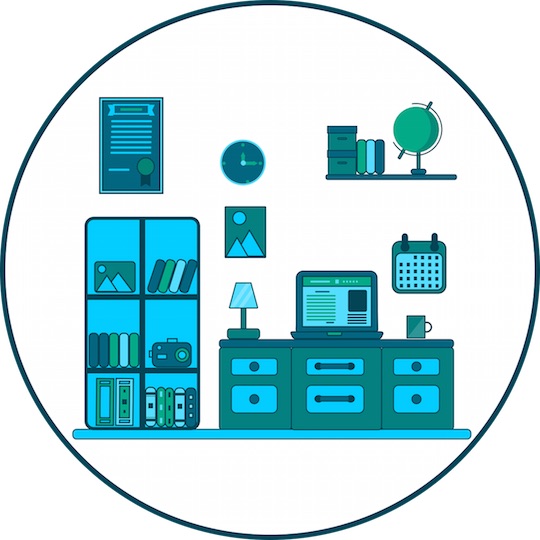TTRS typing - how is it different from other typing programs?

TTRS stands for Touch-type Read and Spell and is different from traditional typing programs in a few ways. For one, the words in TTRS lessons are whole words instead of nonsense key combinations. In this way, you can learn to spell as you learn to type.
More importantly, the words on the screen are accompanied by audio. This teaches you to connect letters to sounds and is important for learning to read, as well as to spell. TTRS follows a carefully structured curriculum of English phonics, so typing drills build automaticity in reading as you progress through the course.
You will find TTRS used in in schools as a typing program for students who are looking to improve their computer skills and strengthen spelling at the same time. It’s also commonly recommended as a tool for students with dyslexia, and can be used to make learning more accessible for individuals with Down syndrome, Autism Spectrum Disorder, ADHD, motor skills difficulties, and physical impairments.
Many homeschooling groups make use of the program to teach children aged 7+ spelling and typing. Adult literacy programs at local libraries and in prisons also commonly employ TTRS as a tool for mature students who need to strengthen their literacy skills, build confidence and acquire workplace skills to add to their resumes.
TTRS is based on the book Alpha to Omega and takes an Orton-Gillingham approach to reading and spelling. One of the main aspects of Orton-Gillingham is multi-sensory learning. The idea behind TTRS’s multi-sensory approach is that users see the words on screen, hear the words spoken aloud and then type the corresponding keys.
This dynamic experience helps the learning "stick." In TTRS there are also hand guides on the screen to show the position of the keys. Users have to spell a word in a module correctly before they can proceed to the next one. Thanks to repeatedly working through a TTRS lesson, the correct spelling of the words is automatized.
History of TTRS
TTRS typing lessons were originally designed as a way of implementing a multi-sensory approach that helped individuals with dyslexia. They are a recommended solution by the British Dyslexia Association and have been used by clients from the British Defence forces to the Royal Institute for the Blind. However, today the TTRS program is used by students of all ages and ability levels in many countries.
Learning to type
In TTRS, accuracy is the primary focus. You have the option to turn speed scores on, but only when you’re ready. Some typing programs place an early emphasis on speed. This can make it hard for students who have learning differences, such as dyslexia and dyspraxia, to master the keyboard because they may need more time to learn. Losing points for slow typing can be discouraging and demotivating.
Typing programs geared toward children can also be full of animation and games. While these are great for some students, they can be visually distracting for others. They can cause students to lose focus and/or spend more time playing than learning. TTRS was designed to have a simple and distraction free interface that helps a child or adult pick up where they left off. In this way the program can be used independently or with minimal parental supervision.
Modules are short so they provide just the right amount of challenge and can be taken in succession to build momentum. You may start off having to spell a word ending, and then build up to the typing the stem and finally, the whole word. The program incorporates plenty of repetition, which is important for students who are struggling with reading or short term memory. There are also dictation exercises in which students must spell from audio alone.

Learning to read
When learners have a history of educational failure, a typing program is a great way to boost their confidence. That’s because it doesn’t seem like an overt literacy solution and has more "street credit" than a standalone spelling or reading app.
TTRS is especially useful when a student is having trouble with reading or with English language learning. Learning how to read is essential for success across the school curriculum, but in English, many words are irregular. This means they cannot be sounded out and need to be learned through rote memorization and drills.
The more often a student is asked to sight read or spell a certain word, the easier they will find it in the long run, whether they’re typing or writing by hand. This is one of the reasons why TTRS is so effective.
How we learn to spell
Children learn how to spell at school by studying lists of spelling words and practicing with phonics. TTRS is a way of building phonemic awareness in English – learn more in this article – which is an essential component of spelling and reading skills. However, the irregularity of English spelling also means that frequency of exposure and familiarity with sight words is an important way of guaranteeing success.
TTRS for dyslexia
There are many ways dyslexia can affect a person, but it's common for an individual to struggle with splitting words into their component sounds. That's why dyslexia can make spelling and reading a challenge. It might affect memory, spoken language production and processing speed too.
Touch-typing is an effective approach for individuals with dyslexia who want to improve their spelling skills as it converts language knowledge into muscle memory. Specifically, a word’s spelling is saved in the brain as a series of key-strokes. This can help with language production and fluency. If you are writing by hand, you can just think where your fingers would go in order to spell a word out using an imaginary keyboard.
Writing on the computer also makes it easier for individuals with dyslexia to correct mistakes, reorganize text and produce neat copy for assignments or work. Lastly, you can write in a dyslexia friendly font and with TTRS you can learn to type in a dyslexia-friendly way.
Typing for adults
TTRS is a great way for adults to learn how to spell. If dyslexia has gone undiagnosed, there can be emotional sensitivities with going back to school. Typing is typically viewed as a career skill, thus taking a typing course may be more motivating. As adults learn to type they also learn to spell. TTRS focuses on some of the most common words in English, including sight words. Learning to read sight words can dramatically improve your reading comprehension as these are terms that make up about 50% of all English texts.

The trouble with handwriting
Handwriting isn’t easy for everyone. In cases of dyslexia, difficulties with spelling can interrupt an individual’s train of thought, cause anxiety, and result in simplified sentences. The language produced in the handwritten work of students with dyslexia is often less complex than what the student is capable of in oral production.
When dyspraxia is a factor, it can prevent an individual from expressing him or herself in writing. That’s because motor skills difficulties make writing physically painful, so the mechanics of handwriting get in the way of written fluency.
For children who struggle with attention difficulties, impulsivity can cause messy handwriting, run on sentences and spelling mistakes. The hand may not be fast enough to catch up with the train of thought and ideas can get lost. In visual impairment or visual processing disorders, handwriting is problematic as there’s no way to change the font or enlarge the screen display.
The benefits of typing
Typing is an important skill to learn. Children are often asked to type assignments from sixth grade on and in high school and college almost all school work must be typed. In schools where every child receives a laptop, it’s important to know how to type so classroom notes can be taken in a more efficient manner. A student's eyes can stay fixed on the board while the hands type automatically. Many standardized tests are computer-delivered and a child who can type the open answer sections has a big advantage in terms of time on task.
Typing skills allow a child to use other computer-delivered programs and acquire new skills too – such as learning to code. This is another reason why TTRS is an essential part of a dyslexia toolkit (read about our other app recommendations) and a great way to teach typing for homeschooled kids.
Incorporating TTRS into a learning routine
TTRS can be used with other learning programs to create a well-rounded approach to strengthening literacy skills. TTRS may be particularly effective if you’ve tried other typing programs and not been successful.
For anyone looking to learn touch-typing
Touch-type Read and Spell (TTRS) has a course that can help, especially if you’ve tried other typing programs and not been successful.
Chris Freeman

close
Can an Orton-Gillingham approach to literacy help your child?
Take a short quiz to find out!
TTRS has a solution for you
An award-winning, multi-sensory course that teaches typing, reading and spelling

How does TTRS work?
Developed in line with language and education research
Teaches typing using a multi-sensory approach
The course is modular in design and easy to navigate
Includes school and personal interest subjects
Positive feedback and positive reinforcement
Reporting features help you monitor usage and progress














